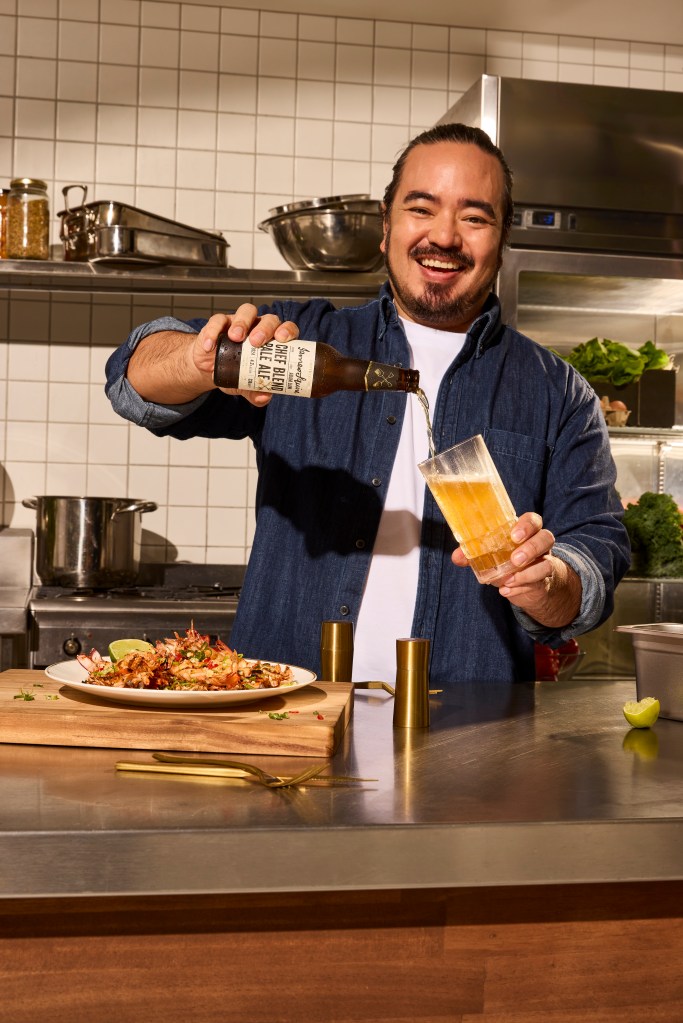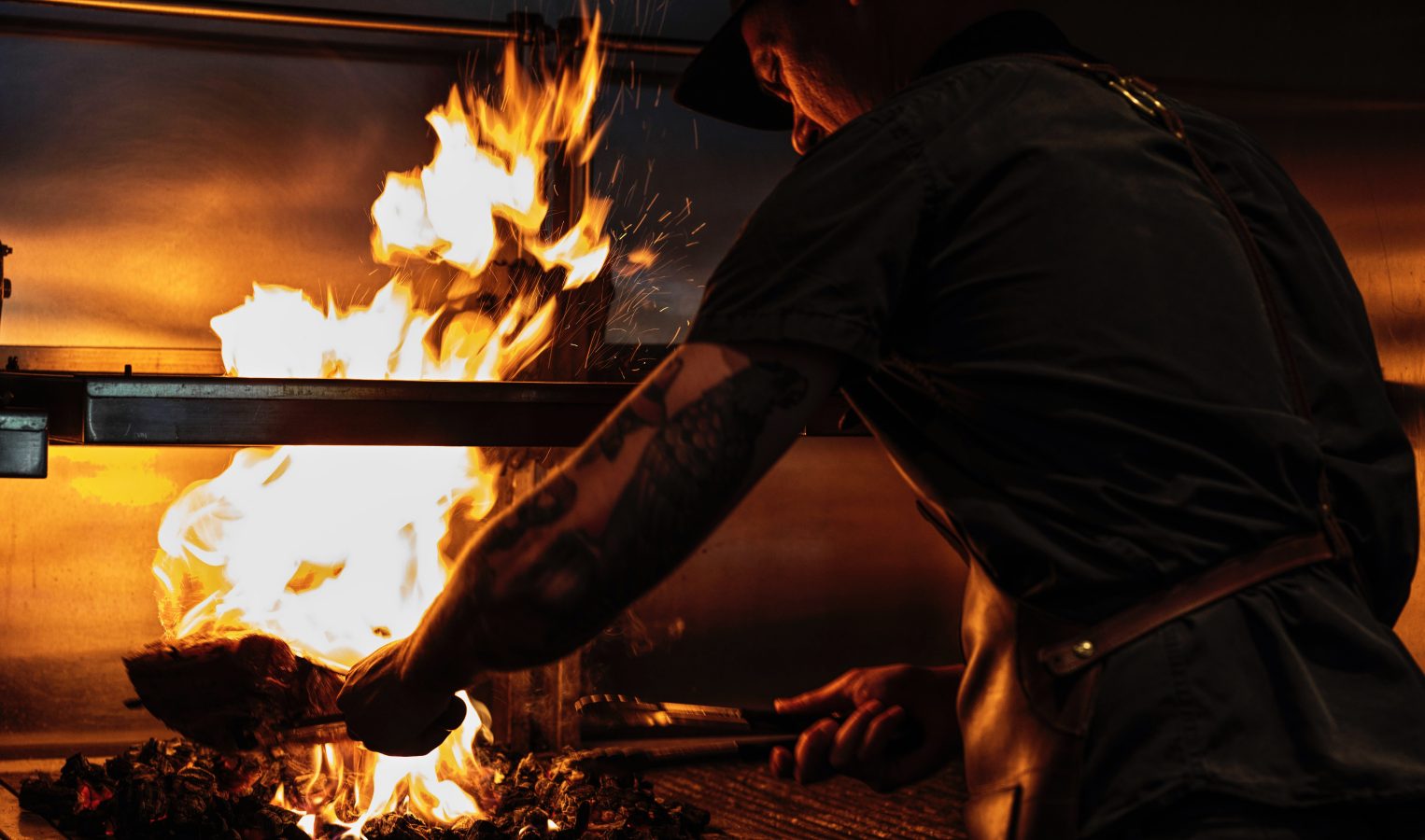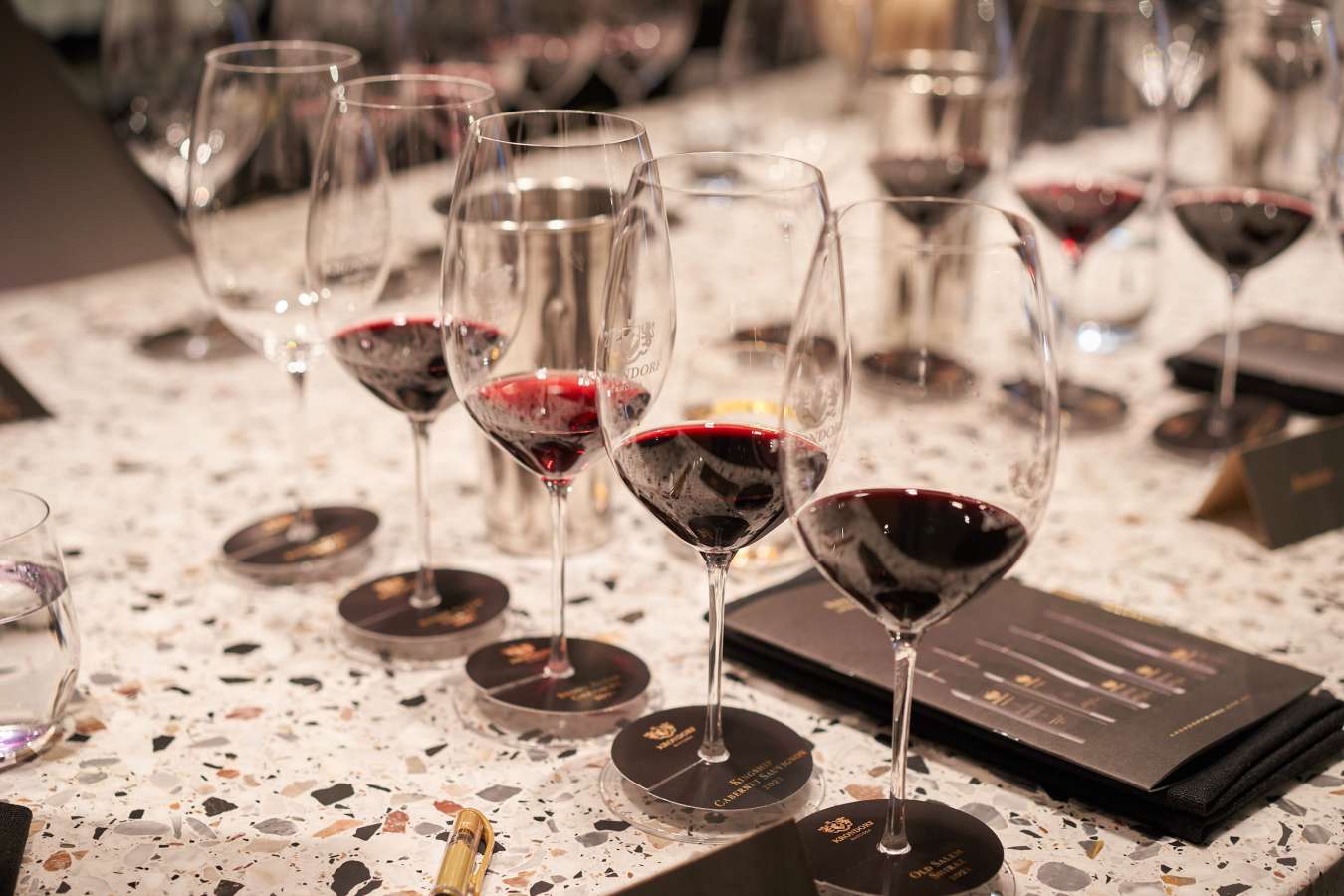When Adam Liaw, former MasterChef winner and trained chemist, set out to create a beer, it wasn’t just another celebrity venture, he insists. The Adelaide expat had one goal and was clear on it: craft a beer that could genuinely elevate the dining experience.

It’s no secret Australians love their food, and perhaps equally, their beer—but when it comes to pairings, the focal point has traditionally been on wine, leaving our beloved brews somewhat in the background.
That’s what Liaw says he is hoping to change.
“Beer and food pairing isn’t as explored as wine pairing, and I wanted to change that,” Liaw tells Forbes Australia. “My approach was rooted in the science of how flavours interact on a molecular level, which is something I’ve been passionate about since my university days.”
Liaw has teamed up with James Squire to create the Chef Blend as part of a broader trend in the food and beverage industry, where the lines between different types of dining experiences are increasingly blurred.
An Australian consumer business report published in May revealed that 1 in 13 Australian hospitality businesses is on the brink of collapse and Liaw says it’s clear “the way we dine out is changing.”
“People are looking for more casual, yet high-quality experiences. Fine dining isn’t just about multiple courses and quiet tables anymore; it’s about enjoying great food with friends in a more relaxed atmosphere.”
He says as consumers become more adventurous and open to new experiences, the traditional rules of food and drink pairing are evolving.
“Wine has long been associated with gourmet dining, but there’s no reason why beer can’t occupy the same space.”
Adam Liaw
The science behind the sip
The celebrity TV chef’s transition from the kitchen to the brewery wasn’t as much of a leap as one might think. Chemistry, after all, is at the heart of both cooking and brewing, he says. In developing his new pale ale, Liaw says he applied his knowledge of chemical reactions, flavour compounds, and the intricate balance of ingredients.
“For me, it was important to focus on the structure of the beer—the body, the mouthfeel, the way the flavours interact with different types of food,” he says. “It wasn’t about making something flashy; it was about creating something that worked on a fundamental level.”
“The way that food and drink match together is about a number of things,” Liaw explains. “Firstly, you need the savouriness, the ‘umaminess’, of a beverage, which alcoholic beverages naturally have, to make the food taste better. But then you have the structure of tannins that balance out the richness of food. Beer doesn’t usually struggle with tannins, but sometimes it can actually be too dry.
The process from concept to creation involved numerous iterations – but most importantly… a lot of taste testing.
“I’m drinking a lot more beer over the last few weeks,” Liaw admits with a laugh. “We went through, I think, eight different brews to end up where we are. It was important to get the body right, so it’s a nice full-bodied beer that still tastes dry, but then you add these aromatics from hops like Rakau—things like stone fruit and green vegetables—and you get this lovely freshness.”
“We wanted to create a beer that could be enjoyed in the same way you would enjoy a fine wine—slowly, with good food and good company.”
Adam Liaw
It was a meticulous approach Liaw is confident has paid off.
“I think there’s a lot more aroma and balance that you can get out of a beer by approaching it from this angle,” he says. “It’s about pushing the boundaries of what beer can be, and how it can enhance the dining experience.”
As for what food a beer actually pairs with, Liaw says the possibilities are endless.
“One of the great things about beer is it can stand up to food that’s a bit more spicy when wine kind of reaches the end of its abilities. I had it with a cinnamon doughnut the other day—it was awesome. It wasn’t designed to match with a cinnamon doughnut, but it worked really well.”


